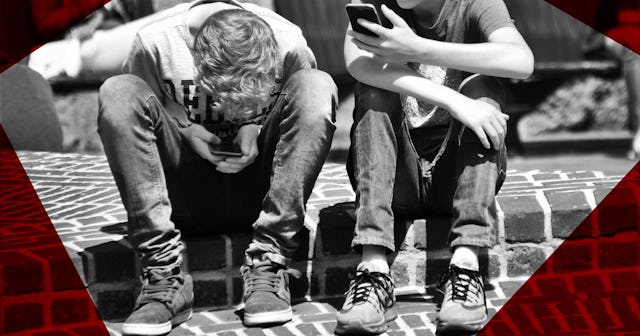Minors Are Selling Photos Of Their Feet On The Internet

Yesterday, my middle school child came home and mentioned that he’d overheard some friends talking about making money by selling pictures of their feet online.
My first thought was that he must’ve misunderstood the conversation.
“The boys said pervy people buy the pictures, but they don’t care since they make five dollars for every photo or video. Some of them are making $25 a week.”
Guess he understood after all.
“How are they getting the money?”
He shrugged.
Blake Barlow/Unsplash
“If they are being paid, they’re probably entering some personal information into a website or giving out their address. That’s dangerous. Are they selling pictures of other body parts?” I asked, cautiously.
“No. Gross,” he replied. “They know not to send pictures of their privates, Mom. Adults are constantly warning us about that.”
But they think photos/videos of feet, purchased by “pervy people” are okay?
I Google “money for pictures of feet”—dozens of websites pop up. There is a YouTube video explaining how to sell photos of your feet which has nearly two million views and tens of thousands of comments.
mohamed Abdelgaffar/Pexels
These were the instructions on one of the websites soliciting foot photos:
“Not showing your face will directly be a big disadvantage for you. No customer wants to see just the feet without any face. You cannot satisfy them only 50%, and expect to make them happy. The face is everything. Yes, I understand that showing your faces in clips where you are showing feet might be a little scary thinking about your privacy. But trust me this is a sure shot way of a disaster of your clipstore studio/career. There are many other ways you can protect your identity:
– Doing makeup
– Wearing props like wigs
– Adding glasses on your face
– Wearing unconventional costumes
Above two points in itself can alter your appearance and make you look like a totally different person.
We don’t recommend, but if you’re not comfortable showing your face, you may wear a mask. (Not Halloween mask types.)”
One of the sites says they pay “via PayPal, Skrill or a gift card.”
Before I call the principal at the middle school, I reach out to a friend in law enforcement who has two sons in high school. She’s never heard of minors selling pictures/videos of their feet online, so she asks her 15-year-old son.
Boudewijn Huysmans/Unsplash
She texts a few minutes later: “Apparently, he knows a bunch of girls who sell hand, feet and ear pictures online and on dating apps and social media.”
My son, my husband and I sit down for a long talk about privacy, grooming, predators, online safety and sexual proclivities.
Later, a friend sends me this article about what a woman experiences when she pretends to be an eleven-year-old girl online. It is horrifying and explicit.
“Beware the guy in the panel van” was my parents’ advice. Today, the bigger threat to our kids is online.
So how do I protect my child?
Nothing is foolproof, but having open lines of communication with your child helps. There are also practical tools available, which do help and are easy to set up. We have a system that alerts us whenever my thirteen-year-old son tries to download an app via Apple Family Sharing. We have parental controls built into our router. Our phones, laptops and tablets are password protected.
But the most important thing we do is pay attention, monitor devices and talk with our kids about the dangers inherent in all of this technology. Protecting our children is our most important job. If our minor children are selling pictures of their body parts or finding explicit photos in their social media messaging apps, we are failing. Many school districts have robust programs in place for parents and kids to learn about internet safety—but we have to go, listen, and have open discussions with our children about the information.
We can’t afford to be naïve about the dark sides of technology, its reach into our children’s lives and the danger to them, when we are the ones responsible for their safety, privacy and security.
This article was originally published on